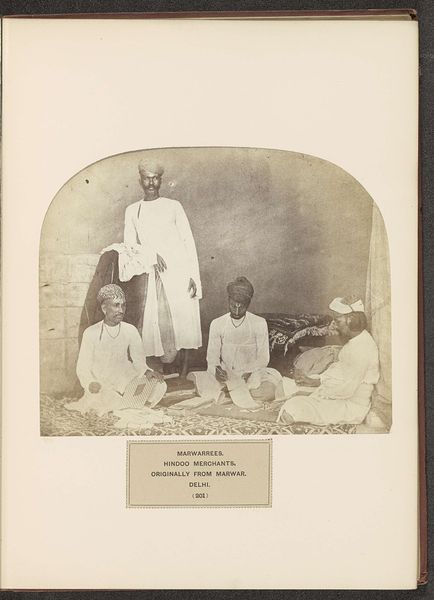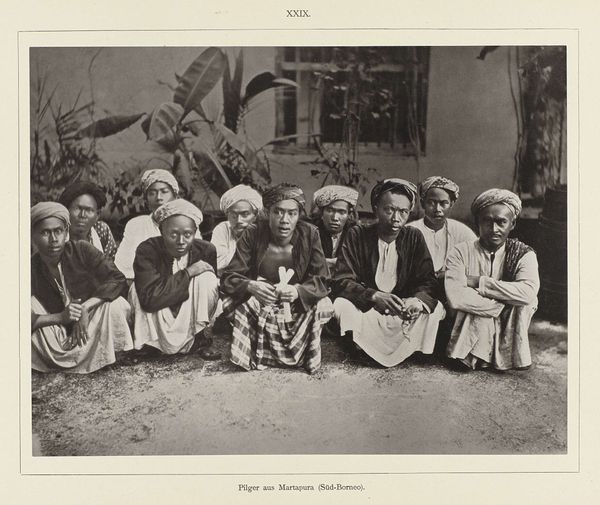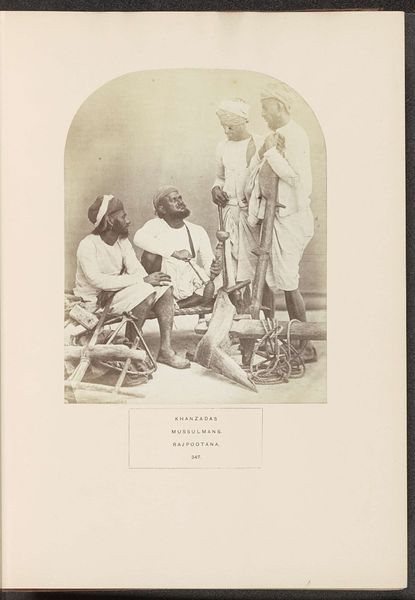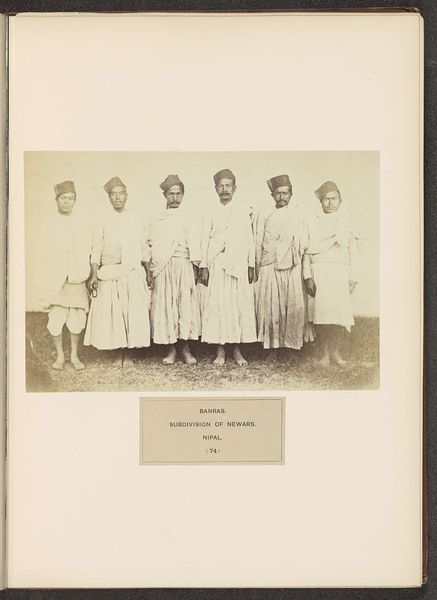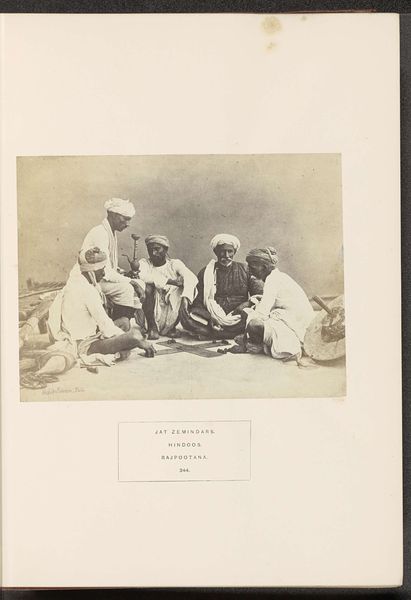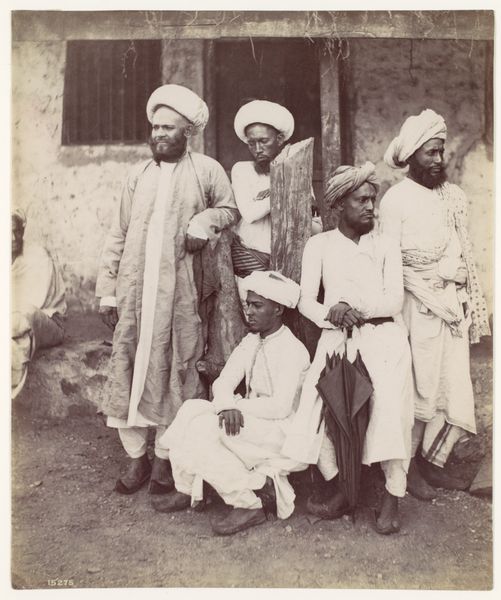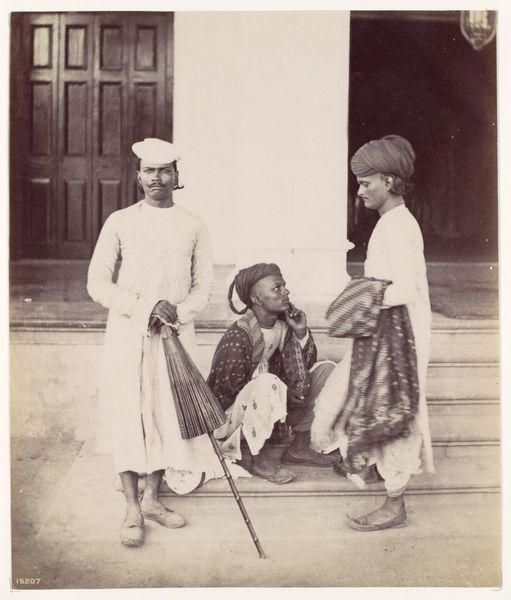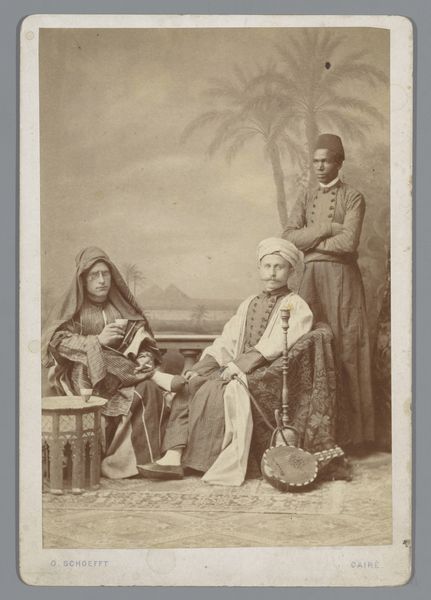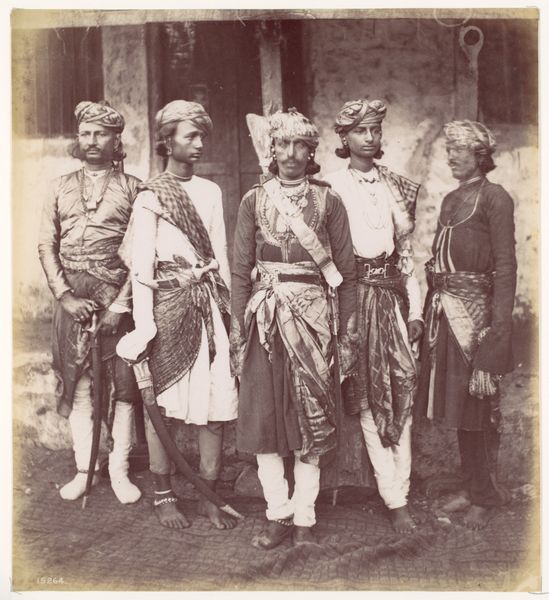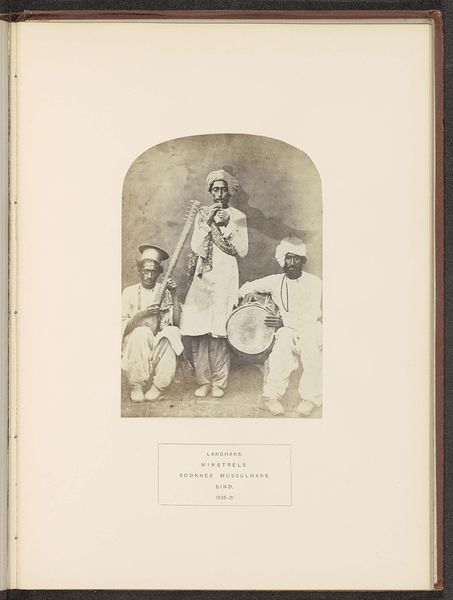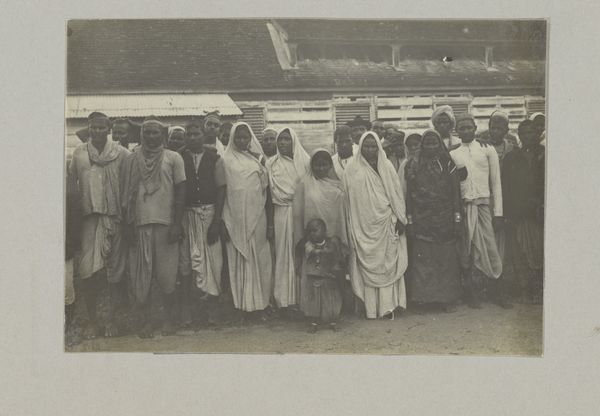
Vier portretten van pelgrims uit Nederlands-Indië, te Djedda before 1888
0:00
0:00
photography, gelatin-silver-print
#
african-art
#
archive photography
#
photography
#
group-portraits
#
orientalism
#
gelatin-silver-print
#
islamic-art
Dimensions: height 140 mm, width 100 mm
Copyright: Rijks Museum: Open Domain
Editor: This is "Four Portraits of Pilgrims from the Dutch East Indies, in Jeddah," taken before 1888 by Christiaan Snouck Hurgronje, using the gelatin silver print process. The individuals appear stoic, each holding a paper - there is an ethnographic quality to it, almost clinical. What's your interpretation of this work? Curator: Indeed. What strikes me is the political and social context embedded within these portraits. These photographs were produced during a period of intense colonial engagement between the Netherlands and the Dutch East Indies. They straddle ethnographic study and colonial administration, as these were possibly intended to document and categorize the population during a politically unstable period in that region of the world. Editor: That makes sense. You can feel the underlying power dynamic, and their formal presentation highlights the attempt to categorize and control these individuals, robbing them of agency. I hadn’t thought of it that way at first. Curator: Precisely! This is a visual manifestation of Orientalism and raises concerns about how power relations influence the creation and dissemination of images of non-Western peoples. Even something as seemingly benign as a portrait photograph can reflect an agenda. Do you consider this work to celebrate diversity and Islamic pilgrimage? Or to serve primarily colonial administrative needs? Editor: That’s a tricky question! On the one hand, the images document an important religious journey. On the other, I suspect its primary function was about control, the institutional gaze on religious pilgrimage as a way to assess dissent towards colonial authority. I’m not sure that these competing forces can be so neatly disentangled. Curator: You are right. And what do you think of the display of these works in modern museums? Is it possible to ever fully decolonize ethnographic photography in such context? Editor: I think understanding that historical and political context is crucial, it is a stark reminder to confront uncomfortable narratives about our collections and our historical inheritance in former colonies.
Comments
No comments
Be the first to comment and join the conversation on the ultimate creative platform.

